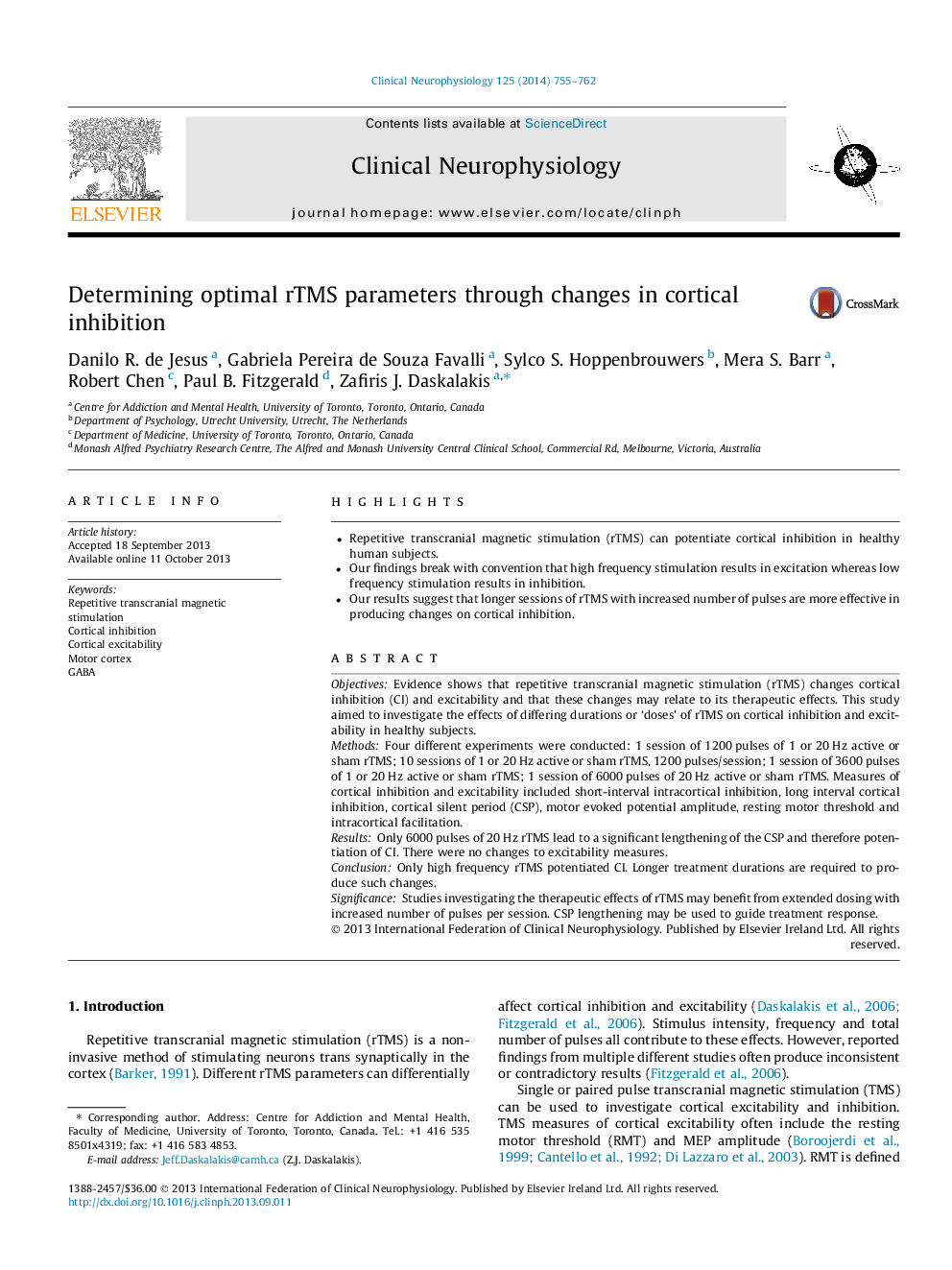| Article ID | Journal | Published Year | Pages | File Type |
|---|---|---|---|---|
| 6008412 | Clinical Neurophysiology | 2014 | 8 Pages |
â¢Repetitive transcranial magnetic stimulation (rTMS) can potentiate cortical inhibition in healthy human subjects.â¢Our findings break with convention that high frequency stimulation results in excitation whereas low frequency stimulation results in inhibition.â¢Our results suggest that longer sessions of rTMS with increased number of pulses are more effective in producing changes on cortical inhibition.
ObjectivesEvidence shows that repetitive transcranial magnetic stimulation (rTMS) changes cortical inhibition (CI) and excitability and that these changes may relate to its therapeutic effects. This study aimed to investigate the effects of differing durations or 'doses' of rTMS on cortical inhibition and excitability in healthy subjects.MethodsFour different experiments were conducted: 1 session of 1200Â pulses of 1 or 20Â Hz active or sham rTMS; 10 sessions of 1 or 20Â Hz active or sham rTMS, 1200Â pulses/session; 1 session of 3600Â pulses of 1 or 20Â Hz active or sham rTMS; 1 session of 6000Â pulses of 20Â Hz active or sham rTMS. Measures of cortical inhibition and excitability included short-interval intracortical inhibition, long interval cortical inhibition, cortical silent period (CSP), motor evoked potential amplitude, resting motor threshold and intracortical facilitation.ResultsOnly 6000Â pulses of 20Â Hz rTMS lead to a significant lengthening of the CSP and therefore potentiation of CI. There were no changes to excitability measures.ConclusionOnly high frequency rTMS potentiated CI. Longer treatment durations are required to produce such changes.SignificanceStudies investigating the therapeutic effects of rTMS may benefit from extended dosing with increased number of pulses per session. CSP lengthening may be used to guide treatment response.
